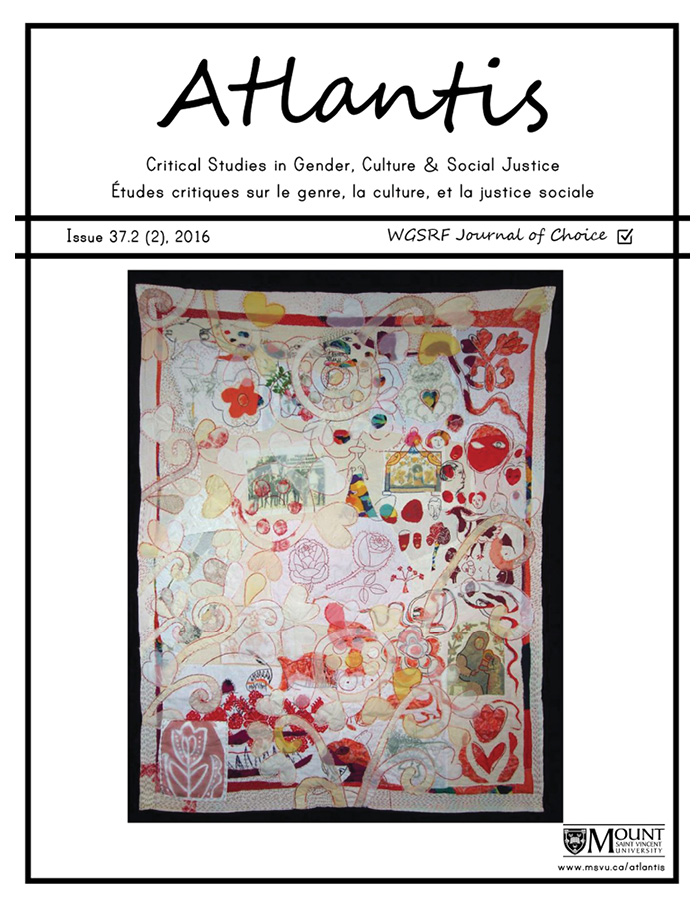Placenta-Eating and the Epistemology of Ignorance
Keywords:
Placentophagy, epistemology of ignorance, childbirthAbstract
This article argues that human postpartum placentophagy—eating one’s placenta—is an example of an epistemology of ignorance. Placentophagy has been stubbornly resistant to conventional scientific inquiry, but has nonetheless been the subject of considerable epistemic speculation based on very little evidence. To remain ignorant about placentophagy takes epistemic work. Tracing the form the epistemology of ignorance takes—disdain for female bodies, visceral disgust—this article argues that placentophagy deserves a more nuanced treatment as a practice that meets the under-served needs of women who fear postpartum depression and as a practice taking place in a context of the biomagnification of environmental pollutants.
Résumé
Cet article affirme que la placentophagie après l’accouchement humain—manger son placenta—est un exemple d’une épistémologie de l’ignorance. La placentophagie a été obstinément résistante à une enquête scientifique conventionnelle, mais elle a néanmoins fait l’objet de spéculations épistémiques considérables, fondées sur très peu de données probantes. Rester ignorant au sujet de la placentophagie exige du travail épistémique. Retraçant la forme que prend l’épistémologie de l’ignorance—dédain pour le corps des femmes, dégoût viscéral—cet article soutient que la placentophagie mérite un traitement plus nuancé à titre de pratique répondant aux besoins souvent négligés des femmes qui craignent la dépression post-partum et à titre de pratique ayant lieu dans un contexte de bioamplification des polluants environnementaux.
Metrics
References
Brodsky, Phyllis L. 2008. The Control of Childbirth: Women versus Medicine through the Ages. Jefferson, NC: McFarland.
Coyle, Cynthia W., Kathryn E. Hulse, Katherine L. Wisner, Kara E. Driscoll, and Crystal T. Clark. 2015. “Placentophagy: therapeutic miracle or myth?” Archive of Women’s Mental Health, June.
Dalmiya, Vrinda, and Linda Alcoff. 1993. “Are Old Wives’ Tales Justified?” In Feminist Epistemologies, edited by Linda Alcoff and Elizabeth Potter, 217-244. New York, NY: Routledge.
Douglas, Mary. 1966. Purity and Danger: An Analysis of the Concepts of Pollution and Taboo. London, UK: Routledge and Keegan Paul.
Haraway, Donna. 2008. When Species Meet. Minneapolis, MN: University of Minnesota Press.
Heyes, Cressida J. 2012. “Afterbirth.” In Trunk Books Volume 2: Blood, edited by Meredith Jones and Suzanne Boccalatte, 347-349. Surrey Hills, NSW: Boccalatte Press.
____. 2013. “Child, Birth: An Aesthetic.” In Dimensions of Pain: Humanities and Social Science Perspectives, edited by Lisa Folkmarson Käll, 132-141. London, UK: Routledge.
Irigaray, Luce. 1993. An Ethics of Sexual Difference. Ithaca, NY: Cornell University Press.
Janssen, Patricia A., Lee Saxell, Lesley A. Page, Michael C. Klein, Robert M. Liston, and Shoo K. Lee. 2009. “Outcomes of planned home birth with registered midwife versus planned hospital birth with midwife or physician.” Canadian Medical Association Journal 181: 377-383.
Jones, Elaine, and Margarita A. Kay. 2003. “The Cultural Anthropology of the Placenta.” In The Manner Born: Birth Rites in Cross-Cultural Perspective, edited by Lauren Dundes, 101-116. Walnut Creek, CA: AltaMira Press.
Kristal, M. B., J. M. DiPirro, and A. C. Thompson. 2012. “Placentophagia in Humans and Nonhuman Mammals: Causes and Consequences.” Ecology of Food and Nutrition 51 (3): 177-197.
Kukla, Rebecca. 2005. Mass Hysteria: Medicine, Culture, and Women’s Bodies. Lanham, MD: Rowman and Littlefield.
Leder, Drew. 1998. “A Tale of Two Bodies: The Cartesian Corpse and the Lived Body.” In Body and Flesh: A Philosophical Reader, edited by Donn Welton, 117-130. Oxford, UK: Blackwell.
Neimanis, Astrida. 2011. “‘Strange Kinship’ and Ascidian Life: 13 Repetitions.” Journal for Critical Animal Studies 9 (1/2): 117-143.
Selander, J. 2014. “The Placenta Encapsulation Movement.” Midwifery Today 109: 12-15.
Selander, J., A. Cantor, S. M. Young, and D. C. Benyshek. 2013. “Human Maternal Placentophagy: A Survey of Self-Reported Motivations and Experiences Associated with Placenta Consumption.” Ecology of Food and Nutrition 52 (2): 93-115.
Simms, Eva-Maria. 2009. “Eating One’s Mother: Female Embodiment in a Toxic World.” Environmental Ethics 31: 263-277.
Steingraber, Sandra. 2001. Having Faith: An Ecologist’s Journey to Motherhood. Cambridge, MA: Perseus.
Tuana, Nancy. 2004. “Coming to Understand: Orgasm and the Epistemology of Ignorance.” Hypatia 19 (1): 194-232.
Williams, Florence. 2005. “Toxic Breast Milk?” New York Times Magazine, January 9. http://www.nytimes.com/2005/01/09/magazine/toxic-breast-milk.html?_r=0
Young S. M., and D. C. Benyshek. 2010. “In Search of Human Placentophagy: A Cross-Cultural Survey of Human Placenta Consumption, Disposal Practices, and Cultural Beliefs.” Ecology of Food and Nutrition 49 (6): 467-484.
Downloads
Published
Issue
Section
License
Authors who publish with this journal agree to the following terms:
1. Authors retain copyright and grant the journal right of first publication, with the work simultaneously licensed under a Creative Commons Attribution 4.0 International License that allows others to share the work with an acknowledgement of the work's authorship and initial publication in this journal.
2. Authors are aware that articles published in Atlantis are indexed and made available through various scholarly and professional search tools, including but not limited to Erudit.
3. Authors are able to enter into separate, additional contractual arrangements for the non-exclusive distribution of the journal's published version of the work (e.g., post it to an institutional repository or publish it in a book), with an acknowledgement of its initial publication in this journal.
4. Authors are permitted and encouraged to preprint their work, that is, post their work online (e.g., in institutional repositories or on their website) prior to and during the submission process. This can lead to productive exchanges, as well as earlier and greater citation of published work. Read more on preprints here.






